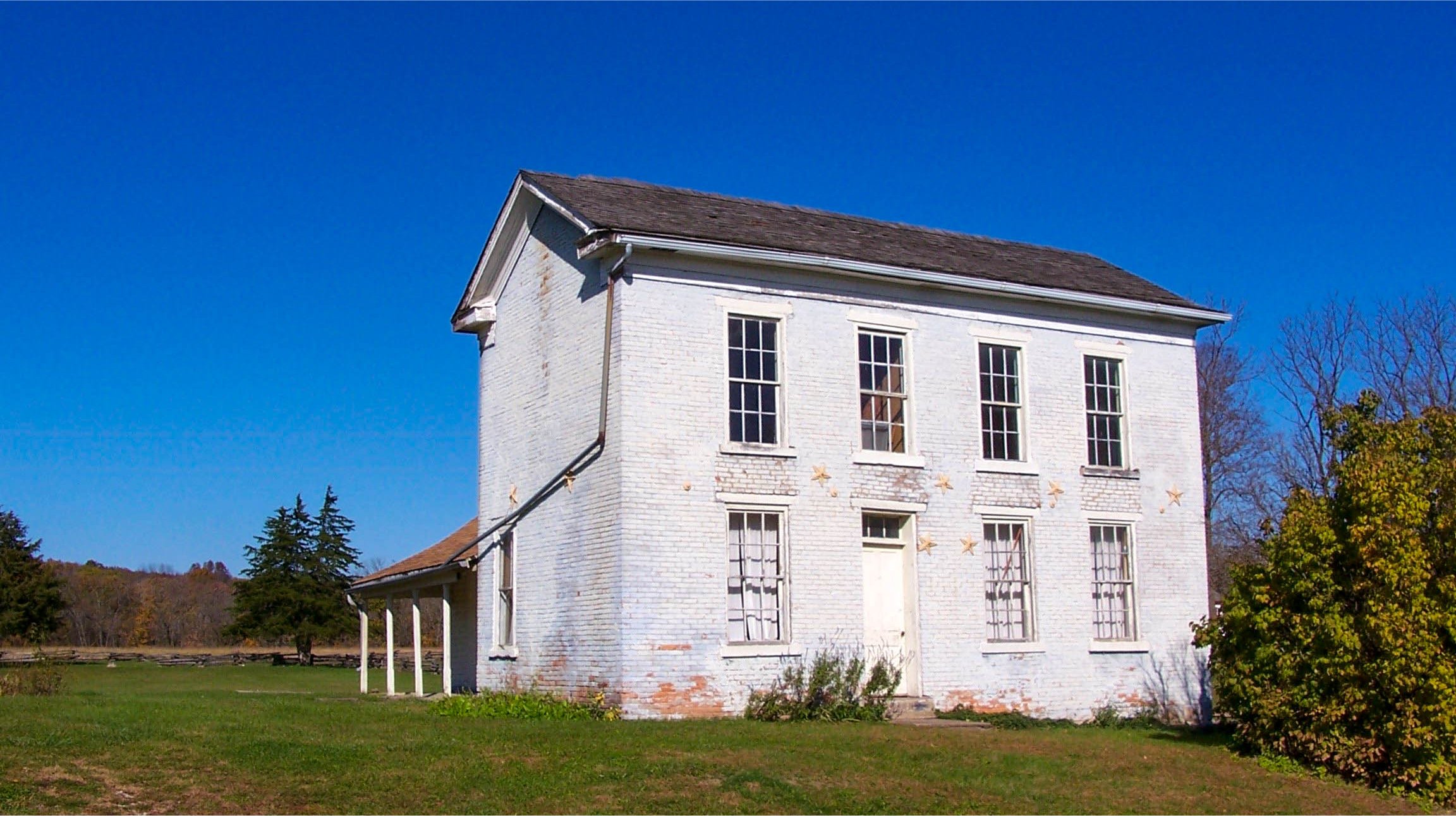Visitors Guide to Attractions
Lee County, Iowa
There is a wide range of attractions for visitors to Lee County, ranging from historical sites such as Old Fort Madison and the George M. Verity River Museum to the scenic views atop the bluffs of Rand Park. For those interested in Mormon history, Lee County is the beginning of the Iowa Leg of the Mormon Pioneer National Historic Trail and has a number of interpretive exhibits throughout the county.
Chief Keokuk Statue
Keokuk, IA
This statue of Chief Kiyo' kaga, (one who moves about alert,) an influential Sauk Chief during the early decades of the 19th century, later known as Chief Keokuk stands on the bluffs overlooking the Mississippi River in Rand Park in the city named after him.
Engine 2913
Fort Madison, IA
Proudly displayed in Riverview Park, this magnificent engine was built in 1943 and was capable of speeds up to 120 miles per hour.
Fort Madison Area Arts Association Gallery Depot
Fort Madison, IA
The FMAAA Gallery Depot is housed in the renovated Chicago, Burlington and Quincy Railroad Passenger Depot and features fine art exhibits, as well as a sales gallery carrying the works of over 60 local artists. They boast great featured "Artists of the Month" exhibits, Lunch-a-la-Art, play host to tours and special major events, and periodically offer special classes.
The Grand Theatre
Keokuk, IA
The Grand Theatre was designed by Merle F. Baker and was constructed on the foundation of the Keokuk Opera House (Circa 1880) which burned in 1923. It was patterned after theaters in Chicago and was praised as one of the finest theaters in the country at the time. Presently, The Grand Theatre is owned by the city of Keokuk and is used as a performing arts center. It is independently operated by the Grand Theatre Commission and used by various organizations.
Keokuk National Cemetery & Veterans' Memorial
Keokuk, IA
The Keokuk National Cemetery is one of fourteen national cemeteries to be authorized by the U.S. Congress in 1862. The cemetery is currently the final resting place for the remains of over 4,000 American soldiers. The Keokuk Veterans' Memorial was dedicated on July 4, 2005 as a tribute to the men and and women who served with honor in the United States Armed Forces. This beautiful monument sets at the entrance of Oakland Cemetery.
Keokuk Observation Deck
Keokuk, IA
With the completion of the new bridge, the Keokuk side of the old bridge was transformed into an observation deck. The deck provides a wonderful view of the Mississippi River, Lock & Dam No. 19, the George M. Verity Museum, and Victory Park as well as Bald Eagles in the winter.
Lock & Dam No. 19
Keokuk, IA
Construction on U.S. Lock and Dam #19 and the Keokuk Power House began in 1910 and was completed in 1913. When the power house first started generating electricity, it was the largest hydro-power plant in the world. Lock and Dam #19 is on the National Register of Historic places and can be viewed from the Observation Deck of the old railroad bridge.
Lone Chimney Memorial
Fort Madison, IA
This monument near the Fort Madison riverfront was erected by the D.A.R. in 1908 and denotes the actual site of Blockhouse #1 of the original Fort Madison.
Miller House Museum
Keokuk, IA
The Miller House and Museum is owned and operated by the Lee County Historical Society. The 1859 home was built by Samuel F. Miller, U.S. Supreme Court Justice appointed by Abraham Lincoln. The house is filled with period artifacts and exhibits, Native American items, and a nineteenth century dental office.
Mormon Pioneer National Historic Trail
Keokuk, Montrose, and throughout Lee County, IA
Lee County played an important part in Mormon history. The Mormon Historic Sites Foundation and the National Park Service have erected interpretive panels at historical locations throughout the county. The Mormon Pioneer National Historic Trail, the first of its kind developed by the National Park Service, begins its Iowa leg at Montrose, across the river from Nauvoo.
North Lee County Courthouse
Fort Madison, IA
Built in 1940 the North Lee County Courthouse is the oldest in continuous use in the State of Iowa. It was listed on the National Register of Historic Places in 1976.
Old Fort Madison
Fort Madison, IA
SADLY OLD FORT MADISON WAS DETERMINED TO BE UNSAFE AND HAS BEEN TORN DOWN
Step back in time at historic Old Fort Madison and discover military life as it was on the rugged frontier of the Louisiana Territory. The Fort is an amazingly accurate reconstruction of the first military fort on the upper Mississippi. Authentically dressed historic interpreters take you through the day to day tasks of the soldiers and their families who lived there. Visitors are encouraged to partake of the past with the hands-on experience of trying a fresh-baked morsel, dipping a candle, or holding a musket.
George M. Verity River Museum
Keokuk, IA
The George M. Verity River Museum is a paddle boat that was built in Dubuque, Iowa for the Upper Mississippi Barge Line in 1927 to revive river transportation and move barges from St Louis to St. Paul. It known as the S.S. Thorpe until the Armco Steel Company bought the boat in 1940 and put it into service on the Ohio River, renaming it after the founder of their company, George M. Verity. The George M. Verity was donated to the City of Keokuk in 1961 after being retired from service and opened as a river museum in 1962.
Nearby Attractions
Hancock County, Illinois
Hancock County is rich in history and offers other types of attractions as well. Today Hancock County is most known for its Mormon history. This era of life in Hancock County can be fully explored by visiting sites such as the Historic Nauvoo Visitor’s Center, the Family Living Center, and the Carthage Jail. Other aspects of Hancock County’s history can be found at the Weld House Museum, the Rheinberger Museum, and the Kibbe Hancock Heritage Museum. The natural beauty of Hancock County can be seen at Nauvoo State Park and the Weinberg-King State Fish and Wildlife Area.
Adams County, Illinois
Quincy is the main attraction in Adams County. This city that sits on the bluffs overlooking the Mississippi River is home to a number of interesting places to visit. The Dr. Richard Eells House is recognized by the National Parks Service as an important Underground Railroad site. The John Wood Mansion is the restored home of Quincy’s founder and the twelfth Governor of Illinois, John Wood. Indian Mounds Park is one of the few places in the state where visitors can view Native American mounds. Quincy Museum in the Newcomb-Stillwell Mansion is home to exhibits on the Victorian era, Native American artifact exhibits, and a dinosaur exhibit. The Villa Kathrine is a unique example of Mediterranean architecture in the Midwest. and is home to the Quincy’s Tourist Information Center, a convenient first stop for visitors to Quincy. Rural Adams County features the Golden Windmill, the only smock mill with its original stones and gears in Illinois, and the 3,323-acre Siloam Springs Park.
Pike County, Illinois
Abraham Lincoln spent a good deal of time in Pike County prior to his election as President. There are probably more houses associated with Lincoln in Pittsfield that any other city in the state and the city has put together a unique Talking Houses of homes and sites associated with him. There are also a number of small historical museums that preserve the heritage of the small rural communities of the county. Lake Pittsfield offers a wide variety of activities such as boating, fishing, picnicking, camping, and the park hiking and biking trails.
Lewis & Clark Counties, Missouri
Lewis and Clark counties offer a variety of attractions for visitors. History can be taken in at both the Iliniwek Village State Historic Site, where a pre-European Native American village is interpreted, or at the Battle of Athens State Historic Site, the site of a Civil War battle and a site of a 19th century settlement. The Battle of Athens site also provides activities where visitors can engage with nature as well as camping opportunities. Wakonda State Park offers similar nature and camping opportunities.
For Travelers Down the River
Missouri's Lincoln Hills
The Lincoln Hills region of Missouri north of St. Louis is often called the Northern Ozarks. In the north is Hannibal, which conjures up images of the steamboat era and has become virtually synonymous with Mark Twain, Tom Sawyer, and Huck Finn. South of Hannibal is the Little Dixie Scenic Byway that travels atop limestone bluffs and through the real river towns of Clarksville and Louisiana. At the foot of the Lincoln Hills in Lincoln County is Cuivre River State Park, one of Missouri's largest and most rugged.
Meeting of the Great Rivers Scenic Byway
The Meeting of the Great Rivers Scenic Byway area is one of America’s newer scenic byways. With over 20,000 acres of forest and wetlands at the heart of the Mississippi Flyway, it is a nature lovers paradise. Visitors will find spectacular colors in the fall and bald eagles in the winter. History abounds in the region ranging from the prehistoric Cahokia Mounds to sites on the National Register of Historic Places.






























